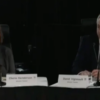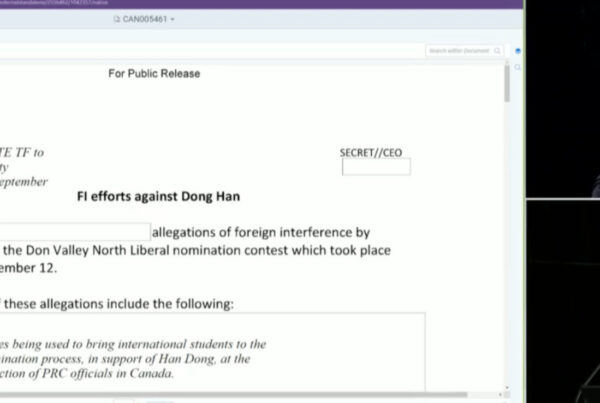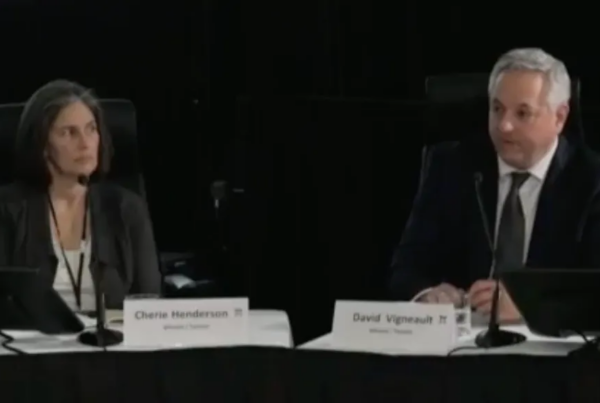Context
As shown on multiple media channels, the first question asked of Toronto’s Police Chief Bill Blair at his news conference on October 22, 2014, after the tragic events on Parliament Hill earlier that day, was: “what is being done to revaluate security for the Pan Am Games next year?”
In July 2015, Ontario will host the Pan Am/Parapan Games. Some 10,000 athletes, their coaches and support staff from 41 countries will be the focus of an estimated 500,000 visitors attracted to the games. Fifty one venues will facilitate the games. This report asks:
Are sufficient security preparations, plans, and trained personnel in place to ensure that the public is well protected from unwelcome events and their effects?
Recent announcements state that the budget has grown from $113 million to $206 million before the killings of two Canadian soldiers in Canada the week of October 20, 2014. The key question is not how much it has increased, but what the money is being spent on? What are the strategic functions to which the money will be spent?
Toronto will have a new mayor, a new council, a new police chief all working together to put on a world class international event; the security challenges surrounding this event will be enormous.
1.0 Introduction: The Rapidly Changing Safety and Security Environment in the 21st Century
This is an age of exponential change, where many of the customary thinking frameworks and assumptions are coming under challenge. Within the context of safety and security issues, the challenges faced are like so many others: amorphous. As a result, all should be cautious to use traditional models and modes of thinking to address today’s and tomorrow’s safety and security challenges. The caution is warranted, not necessarily because the previous ways are wrong, but rather, the previous ways may have become inapplicable or out-dated in a rapidly-changing environment.
Proof of this rapidly-changing environment happens daily, continuously altering the threat level. For example, in March 2014, when asked about the threat level facing the Toronto 2015 Pan Am/Parapan Am Games (TO2015), Ontario Provincial Police (OPP) Inspector Mike McDonell, head of the Integrated Security Unit (ISU) stated that the level was low but that, “Everything is subject to change. If the national security threat level of Canada changes, everything changes.”[1]
Since Inspector McDonell made those comments, in addition to the killings of the two soldiers in October 2014, the following has occurred:
Canadians have been divided about the issues in the Middle East, resulting in violent demonstrations within our borders;[2]
The Islamic State (IS)[1.1] has made direct threats against Canadians;[3]
There is a growing concern of Canadian citizens involved in possible terror activity abroad, resulting in the Canadian government beginning to invalidate passports of Canadians;[4]
Allies—specifically Britain and Australia—have raised the threat level, as a result of growing concern of homegrown terrorism;
Threats that IS is plotting imminent attacks against allies;[5]
Russia has conducted aggressive military activity, such as Russian aircraft flying into Canada’s Air Defence Identification Zone[6] or making provocative passes against Canadian military ships,[7] a likely response to Canada’s staunch support of the Ukraine;
There are growing concerns that the Ebola virus has not been contained, including scares within Canada and confirmed cases in Dallas and Madrid; and
Extreme weather events continue to increase in frequency, resulting in higher costs and more significant damage.
As a result of these events, any reasonable person would conclude that the national security threat of Canada has changed since Inspector McDonell made his comments. More importantly, a statement has been made that as threat level changes, the safety and security costs of TO2015 are expected to skyrocket.[8]
Operating under the assumption that the threat level is dynamic and constantly changing, this report strives to generate a discussion in three general areas:
A strategic focus: are the decision-makers considering the full spectrum of threats that TO2015 faces? This section also illustrates why organizers may have difficulty identifying threats.
An operational focus: how are resources being sourced and utilized? More specifically: do the personnel, tasked with providing safety and security at TO2015, have the appropriate resources and training to provide a safe and secure environment?
A short overview of Ontario/Toronto-centric issues that may have impact on TO2015: rising security costs, the 2014 Toronto Mayoral race, and the appointment of Toronto’s next Police Chief.
2.0 Learning from the Past, Not Being Bound by the Past
While the German-based Red Army faction was forming in 1972, Robert Kennedy was pursuing the international and domestic tentacles of La Cosa Nostra. Airliner hijackings seemed to be increasing week-by-week. Contextually, it would not be unreasonable to state the North American public had little concern or knowledge about: asymmetric threats, homegrown terrorism, transnational crime, or even extreme weather events. Cyberattacks, however primitive in form, were limited to university labs and government agencies. For perspective, one of the first known cyberattacks occurred in 1943, where René Carmille, a comptroller general of the French Army hacked and sabotaged the Nazi punched card computer system, altering the census data, resulting in countless numbers of Jewish people saved from death camps.
Compared to today, even matters of a more general or benign nature, such as international and domestic air travel, were significantly lower in profile and numbers. For example, in 1980, there were an estimated 640 million air travelers, whereas in 2013, the number jumped to 2.8 billion,[9] an increase of over 400%. Comparatively speaking, the 1970s were a quiet time to what we face today, yet there are some lessons that we can still learn from that time period. Therefore, making any assessment should be mindful of past experiences, but not bound by them, especially as contexts change.
For example, using the 1972 Munich Olympic Games (“1972 Games”) Massacre—from an operational assessment perspective—has limited applicability for historical and contextual reasons. Historically, the organizer’s decision to keep security “low-key” was an effort to demonstrate to the world Germany’s new peaceful bearing.[10]
The real lessons of the 1972 Games cannot come from the operational planning level. The real lessons from the 1972 Games are at the strategic level. An argument—not to be made in this report—can be made that the German agencies were neither ill-equipped nor poorly trained to handle a hostage crisis. Rather, the organizers made a decision that there was no need to plan for worst-case scenarios and that bad-case scenario planning was good enough.[11] The decision by 1972 Games organizers was that the Olympic Village was significantly protected by: daytime security guards, wearing light blue leisure suits, carrying walkie-talkies, and a six-foot-high chain-link fence.[12] There are few great insights to learn from the tactical deployment of personnel, facilities, barriers, and alike. Yet, from a planning perspective, there is a great deal to learn in terms of strategic thinking.
Unfortunately decisions are not always made on fact. Sometimes decisions are based on perceived risk—this is what happened in the 1972 Games. At the time, organizers believed that the security threats were primarily domestic in nature, ultimately catching the organizers off guard.[13] Furthermore, a reasonable hypothesis is that organizers did not have a good understanding of safety and security issues. This hypothesis holds true for TO2015, this is especially noted by Tourism Minister Michael Chan in March 2014 when he stated that:
“The $113-million[2.1] was presented a long time ago, in 2010, and it was a place holder because security has to be there. You probably will appreciate TO2015 doesn’t have the skills, they don’t have the expertise, they don’t have any knowledge about security.”[14]
Unfortunately, the 1972 Games Massacre is something that could have been averted if decision-makers had a better understanding of risk and decided to plan for “worst-case” scenarios. Specifically, in the lead up to the 1972 Games, only a few decided to think creatively, like German police psychologist Georg Sieber. Sieber was tasked with imagining scenarios that could horribly damage or taint the 1972 Games. He came up with 26 scenarios and in Situation 21, Sieber envisioned that:
“a dozen armed Palestinians would scale the perimeter fence of the [Olympic] Village. They would invade the building that housed the Israeli delegation, kill a hostage or two, then demand the release of prisoners held in Israeli jails and a plane to fly to some Arab capital.”[15]
The tragedy could have been avoided if organizers took a real and credible threat seriously—however outlandish the scenario may have seemed to them at the time. Situation 21 was not a zero probability scenario. Rather, Situation 21 was a low probability scenario that was not taken seriously because of the risk perception of the organizers. The 1996 Atlanta bombing during the Summer Olympic Games and the events of October 2014 in Canada demonstrate that “lone wolf” attacks, regardless of motivation, must be given more than a low probability ranking in a threat assessment.
2.1 Understanding Risk and Risk Perception
“Risk” is a term that has no singular agreed definition, but one that is often used is: Risk = Likelihood x Consequence.[16] With quantitative values, prioritizing risk becomes easier, but defining many elements related to likelihood and consequence—in order to generate a quantitative figure—is a qualitative process, making this exercise both art and science. Therefore, risk perception—a function of how people feel about threats and hazards—plays a significant role in the planning process. In 1950, the City of Winnipeg suffered a devastating flood. As a result of federal inquiries and royal commissions, one proposal was strongly supported by newly-elected Premier Duff Roblin. The proposal called to create a massive floodway to protect the city from the Red River’s overflow. In the face of fierce political opposition, the Roblin administration went ahead with the $63.2 million project which moved more than 100,000,000 cubic yards of earth, more than the Panama or Suez Canals.[17]
Since the creation of the Red River floodway—which included a recent $665-million expansion—the city of Winnipeg has saved over $32 billion and countless lives.[18] “Duff’s Ditch” was created because there was political will in the face of opposition. Threats and vulnerabilities were identified and taken seriously. But actions were only taken after a tragedy occurred. In this case, action was taken because of the devastation in the 1950 flood. In the 1972 case, Germany’s Grenzschutzgruppe 9 der Bundespolizei (Border Protection Group 9) or GSG-9, the counter-terrorism and special operations unit of the Federal Police, was created as a result of the 1972 Games tragedy.[19]
Unfortunately, in situations like these, decisions can be reactionary. Part of the issue is human nature, which includes optimism bias or the ‘it-can’t-happen-here’ syndrome.[20] Even the 2012 London Summer Olympic Games (“2012 Games”), a highly criticized event from an operational security perspective, had many security consultants “holding their breath” that nothing would go wrong.[21] Furthermore, not only do humans tend to take on behaviour that is more risky if we believe we have influence over the outcome,[22] but humans are outright bad at understanding probabilities,[23] resulting in a complete failure to recognize that low probability is completely different from zero probability.
And if human nature was not working against human interests enough, humanity is also prone to overreaction and excessive preventative action because of collective emotional biases.[24] These human nature issues only become compounded by the realities of current societal interdependency, which amplify the asymmetric effect of an event or action. For example, consider the level of public confusion today if the mobile networks went out of service, something that we witness during the September 11th, 2001 attacks, where many communication networks were overloaded to the point of failure and collapse and later taken out of service for many days by authorities.
The best way to illustrate optimism bias and probability at work is the lottery ticket versus being killed in a terrorist attack example. The odds of winning Lotto 6/49 are 1 in 14 million, but the odds of being killed in a terrorist attack while traveling are 1 in 650,000.[25] People play the lottery with the hope of winning, but these very same people normally do not worry about a terrorist attack affecting them, regardless of their understanding of probabilities and odds. Our emotions and feelings get in the way of our decisions, meaning that safety and security assessments must be done as dispassionately as possible.
For example, this asymmetric effect is most apparent in the aftermath of the Boston Marathon bombings. In a matter of moments, six bombs, which cost less than $100 each to manufacture, caused over $330 million damage in lost wages, retail sales, and infrastructure damage.[26] In comparison, the equivalent action in the business world is a 5,500,000% return on investment in a matter of minutes. Or another example: a broken tree in Ohio caused a cascading blackout affecting millions across Central Canada and the US in 2003.
In other words, human nature, as related to the “Risk Equation” shows that:
From a probability perspective, most are not good at assessing likelihood; and
From a reward/loss perspective, most are not good at assessing consequence either.
But human nature cannot be blamed for all society’s miscalculations and tragedies. As a society, there is a considerable amount of information to make informed decisions. Therefore, in 2014, there should be little debate about what are threats. More specifically, the threat spectrum includes: all naturally-occurring events like floods, earthquakes, pandemic, and even climate change; man-made events, such as terrorist actions, transnational crime, human trafficking; and critical infrastructure failure. If people debate the validity of classifying these issues as threats they should refer to the 2010 and 2014 Quadrennial Defense Review, the 2010 and 2014 Quadrennial Homeland Security Reviews, and the Worldwide Threat Assessment of the US Intelligence Community produced by the Director of National Intelligence, all in-depth reports, which identify these issues as credible threats across North America.
While the first step is to define the threat, the difficult question to be grappled with is: how do we address the threat? Additionally, decisions makers must be mindful that if they miscalculate the primary threats and risks, all subsequent decisions will be circumspect or flawed. In other words, during the planning process, poor situational awareness may be the greatest vulnerability.
All of the above begs the simple question: when there are clearly defined threats and vulnerabilities, why are decision-makers waiting for something bad to happen before they react? Is it because decision-makers do not understand the threats? Is it because of risk perception? Is it because of lack of political will? Is it something else? In TO2015 case, if the hypothetical answer from decision makers is: we cannot spend that much on safety and security measures. Accordingly, the follow-up question is: if a safe and secure environment cannot be reasonably guaranteed, why is TO2015 being held?
Therefore: how can society avoid biases and how can decision-makers make informed decisions about threats, vulnerabilities, and risk? When the Ontario government gave TO2015 another $74 million to cover, “unforeseen costs and shortfalls” in September 2014, Pan Am Games CEO Saad Rafi stated, “Those risks were well known going into this.”[27]
A good question to ask the TO2015 organizers is: If the risks were known, how was risk actually calculated; and by whom? Or more importantly: if risks actually identified and assessed, what has been done to minimize them?
2.2 Why TO2015 is Different than Previous Canadian Experiences
TO2015 is estimated to bring over 10,000 visiting athletes, coaches, and team officials, plus an additional 500,000 tourists,[28] to the Greater Toronto Area (GTA) for a sustained period of time. In terms of raw numbers, Toronto has had larger events, such as the annual Caribbean Carnival, with its nearly one million visitors for the parade[29] and World Youth Day in 2002, with its 850,000 attendees.[30] But as a sustained event, over a series of weeks with multiple venues that require specific safety and security requirements, Toronto has no prior or equivalent experience to TO2015.
Some may say that Canada does have prior experience with multi-sport events, but from a strategic perspective, these past experiences have limited applicability to TO2015. Here is why:
Both the world and Canada have changed considerably since the 1976 Montreal Summer Olympics Games. Specifically, the global security context has changed dramatically and even Toronto and Montreal, within the Canadian context, have changed their respective urbanity and composition;
Again, contextually, the safety and security issues present at the 1988 Calgary Winter Olympic Games have little commonality with what Toronto will face in 2015;
The 1999 Winnipeg Pan Am Games (1999 Games) took place during a time of relative global stability, where many of the emerging threats faced today did not exist. Furthermore, from an operational perspective, Winnipeg had some prior experience from the 1967 Pan Am Games. Also, as a metropolitan area, Winnipeg and Toronto are significantly different;
A comparison against the 2010 Vancouver Winter Olympic Games (2010 Games) would yield the greatest resemblance to the current global security outlook, but much has changed in the world since 2010; and
Canada had support from participating countries (given the global stage of the Olympics) and Toronto’s sprawl and Vancouver’s centralization and bridge system make for very different cities with different vulnerabilities.
Some might suggest that the G20 provides relevant experience; others could suggest it’s heavily criticized policing and security approaches are to be avoided.
Not only does the GTA and the Province of Ontario have little prior experience in security for such events, but TO2015 has also been mired in a series of controversies, resulting in: leadership changes,[31] questioning of contracts awarded,[32] unexplained bonus packages,[33] mismanagement of budgets,[34] review by the auditor general,[35] and additional funds being requested by the organizers.[36]
Reconsider Inspector McDonell’s comment, “If the national security threat level of Canada changes, everything changes.” The world has changed and it has done so in a constant and dynamic way. And the world will change again by July 10th, 2015, the day of the opening ceremonies. As the threat evolves, it is worth asking Inspector McDonell if he believes his comment still holds true that, “This is not the Olympics, nor does it have the iconic value for attracting threats like the Olympics has.”[37]
Perhaps TO2015 does not have the same iconic value as the Olympics, but the PanAm/Parapan Games are a potential stage for a person or persons to make a statement.
2.3 Thinking Creatively About the Threats
Even before the recent Parliament Hill incidents, there have been many contextual changes since TO2015 was awarded to the City of Toronto. For example, when the bid was won in November 2009,[38] the headlines ranged from: fear of H1N1 spreading,[39] Canadian Forces preparing to withdraw from Afghanistan,[40 and US Army base shootings.[41] Nobody had ever heard of IS; Toronto had not experienced a massive flood and crippling ice storm; BlackBerry did not suffer a four-day outage;[42] Edward Snowden had not yet explained how easy it was to hack into personal e-mail and few people knew the name James Foley. On August 19th, 2014 most of the world knew name James Foley.[43] Locally, there were only 11 event venues within the City of Toronto at the start of planning in 2009, but now, there are over 40.[44]
For TO2015, most threat assessments will be conducted by the OPP, with the assistance of their Federal partners: Public Safety Canada (PSC), Canada Border Services Agency (CBSA), Citizenship and Immigration Canada (CIC), Canadian Security Intelligence Service (CSIS), Department of Fisheries and Oceans (DFO), Royal Canadian Mounted Police (RCMP), Health Canada (HC), Public Health Agency of Canada (PHAC), Transport Canada (TC), Environment Canada—Weather Services, Environmental Assessment, Environmental Emergencies (EC), and Industry Canada (IC).[45] It is not unreasonable of the public to ask:
What do these agencies consider to be threats? How are they determined?
How in-depth are the threat assessments?
What compromises—if any—are being made to accommodate institutional interests?
Are we relying solely on Canadian information-gathering or are we working with international partners? Does the US Government, for example, have special concerns that are not being well addressed?
Do our partners and guest countries have concerns about our safety and security protocols?
Is anybody thinking like the German police psychologist Georg Sieber during the lead up to the 1972 Games?
These are fair questions to ask, particularly as the costs of TO2015 continue to grow, especially as the base $2.5 billion budget for TO2015 does not include security and transportation budgets.[46]
2.4 Mother Nature Always Poses a Threat
Consider for a moment the Red River floodway did not exist: would the safety and security requirements of the 1999 Games have changed? Of course they would. Lieutenant-General (Ret.) Russell Honoré of the US Army—tasked with cleaning up the aftermath of Hurricane Katrina in 2003 where dikes and spillways failed—has constantly said it is always cheaper to plan for a worst case scenario than dealing with one you are unprepared for.[47] The Red River floodway is the perfect example to underscore that point.
The GTA recently experienced its own bouts with mother Nature, bringing the safety and security of citizens into question. In 2013, there were two profound examples: the July flood and the December ice storm. Within the TO2015 context, practical question to ask is: with so many venues close to potential flood areas,[48] [49] do the organizers have evacuation plans in place? Evacuation assistance was required during the 2013 flood,[50] setting a precedent. Yes, there is a low probability for a similar event to happen again during TO2015, but decision-makers should be mindful that by not taking advantage of reasonable preventative steps and options—such as the Basement Flooding Protection Subsidy Program[51] at the household level—little is done minimize impact of possible future events.
The same can be said for an earthquake. An earthquake is a low probability event in the GTA, but there is precedent from 2010, where a moderate 5.0 earthquake hit Ontario, Quebec, and the United States.[52] The earthquake happened on June 23rd, 2010, but: what if the earthquake happened three days later during G20, when the riots were taking place? What happens? What is the response? Is there a plan? To quote General Honoré, “Mother Nature can destroy anything made by man, anytime, anyplace. And, by the way, accidents happen.[sic]”[53] Decision-makers must be mindful that past events set precedent.
The impact of pandemics cannot be discounted either. In 2003, the GTA was impacted by Sever
e Acute Respiratory Syndrome (SARS), causing loss of life and global reputational damage. The clear lesson of SARS was that Ontario was unprepared, particularly at the front line. In 2009, Canada narrowly avoided the H1N1 flu pandemic threat because Canadian decisions makers planned (and hoped) for a bad-case scenario, where the H1N1 strain acted similarly to the 1957/1958 Asian flu threat.[54] But if the H1N1 strain mutated and began to act like the 1918 Spanish flu (a worst-case scenario), Canada would have faced a scenario where resources and capabilities became overwhelmed, resulting in a national emergency. Given the current Ebola concern as well as EV-D68, the acute respiratory illness affecting children throughout the US, coupled with the large influx of travelers to the GTA: have decision-makers considered a scenario where TO2015 is impacted by a pandemic?
2.5 What Is Known About Latin and South American Safety and Security Issues?
Of the 41 participating countries at TO2015, the majority of them are from Latin and South America, yet everyday Canadians are rarely exposed to the issues of the region. A quick review of all the major Canadian news outlets and newspapers will clearly demonstrate Latin and South America is not the lead story or any story at all at times. As an aside, Latin Americans make up a significant portion of the Canadian population, sometimes surpassing 10% of the population in major metropolitan areas.[55] Additionally, even CSIS does not have much readily available information on the Latin American region. For example, in the 2011-2013 Message from the CSIS Director report,[56] the only mention of South America is about kidnapping in Colombia.
A more thorough scanning of other CSIS reports and publications, including World Watch: Expert Notes and Occasional Papers: Priority Issues reveals little-to-no mention of Latin and South America. Also, reviewing the country profiles of Argentina, Brazil, Colombia, Mexico, Nicaragua, Paraguay, and Venezuela, on the Government of Canada’s travel advisory site reveals: issues of crime, kidnapping, and two known terrorist groups in Colombia, the Revolutionary Armed Forces of Colombia (FARC) and the National Liberation Army (ELN),[57] including well-reported cartel-related issues originating principally, though not exclusively, from Mexico. With so many people potentially coming into Canada from that area, is it unreasonable to ask: are there no other potential security issues originating from the area?
Ciudad del Este, a city in the tri-border area of Argentina, Brazil, and Paraguay may be an unknown place to most Canadians, but is well known to hard criminals and terrorists. Known as a city full of spies and thieves[58] that has been characterized as one of the few places in the world where crime really does pay,[59] the region has become a major base for many known terrorist organizations. From this region, criminal and terrorist groups conduct illegal activities, which include: drug trafficking, money laundering,[60] counterfeiting, fundraising for terrorist groups (upwards of $20 million annually), a source of human trafficking, and even a transit route for weapons shipments.[61]
What may also surprise Canadians is that one of the most active terrorist groups in the region is Hezbollah, which has been linked to the 1992 bombing of the Israeli embassy in Buenos Aires.[62] The Hezbollah connection to the region may not be that apparent at first, but the largest Lebanese diaspora in the world is in South America, totalling 8.6 million persons, including 5.8 million in Brazil and 1.2 million in Argentina.[63] Canadians should be concerned that Hezbollah’s activities in the area are not necessarily geared towards violence in the area. Rather, the tri-border area (sometimes referred to as the “Triple Frontier”) along with areas in Bolivia and Venezuela—countries that have close ties with Iran, sharing military and intelligence tactics[64]—are Hezbollah strongholds for fundraising and recruitment.[65] Inside Venezuela in particular, terrorist groups are setting up training camps[66] and even facilitating training to and from Iran for training courses.[67]
Threats originating from these areas are not new. In fact, there is evidence of known threats originating from this narcoterrorism hub since at least the beginning of the millennium[68] making Latin and South America an excellent resource for fundraising, recruitment, and training.[69] Groups that, by definition, should be anathema to each other (crime/religion) have developed a comfortable relationship, sharing training camps, recruiting bases, and supporting each other through networks of mutual assistance.[70]
A simple search[71] of publicly available documentation on the Government of Canada’s website shows that officials in Canada are at least aware that there could be an issue from the tri-border area, but the public can reasonably ask: between the RCMP, CSIS, and CIC, are there enough resources to vet everybody coming into the country for TO2015? With the increased scrutiny on travel to the Middle East, does South America become a transit route to mask travel patterns or is it possible that one of the team delegations has been penetrated by a malicious actor? In an age of shrinking budgets, can personnel and departments that are likely already running at capacity handle the challenge?
None of the above is meant to suggest that an extreme weather event, pandemic, or terrorist attack will happen TO2015. What the above suggests is that there are known and defined threats that should be addressed and the public has a right to know if the decision-makers are:
Taking known and defined threats fully into account, particularly as there is baseline experience of these threats affecting the GTA; and
Thinking creatively about the threats and so-called ‘low’ risks that could affect TO2015.
In summary: have the decision-makers taken appropriate steps to master the probable and manage the unpredictable?
3.0 The Evolution of Training Requirements
Just as the threat level changes, so do the roles and responsibilities of those tasked to ensure a safe and secure environment. For example, Justice Frank Iacobbucci outlined in his report Police Encounters with People in Crisis that the nature of policing has changed as front line police officers must now deal with more complex issues, requiring more extensive training in disciplines generally outside of the traditional policing education model.[72] Similarly as the nature of security changes, the same arguments can be made about the private security training model. Therefore, training people with the appropriate and necessary skills is just as important as making thorough risk assessments. Knowing there is a problem and being able to deal with the problem are two very different issues.
Malcolm Gladwell’s “10,000 hour rule” has been often cited as the “key to success” in any field.[73] While the rule’s validity has been questioned by some, all critical reviews do admit the following: in order to be successful, practice is very important.[74] The old adage “proper practice prevents poor performance” still holds certain truth. With that in mind, consider for a moment the following job posting on Kijiji for front line private security jobs, including supervisor roles, for TO2015, “NO EXPERIENCE OR LICENSE REQUIRED!![sic]” [75]
The Ontario Minister of Tourism, Sport, and Culture, Michael Coteau, who is also the minister responsible for TO2015, states that no price tag should be put on the safety of Ontarians.[76] Yet








